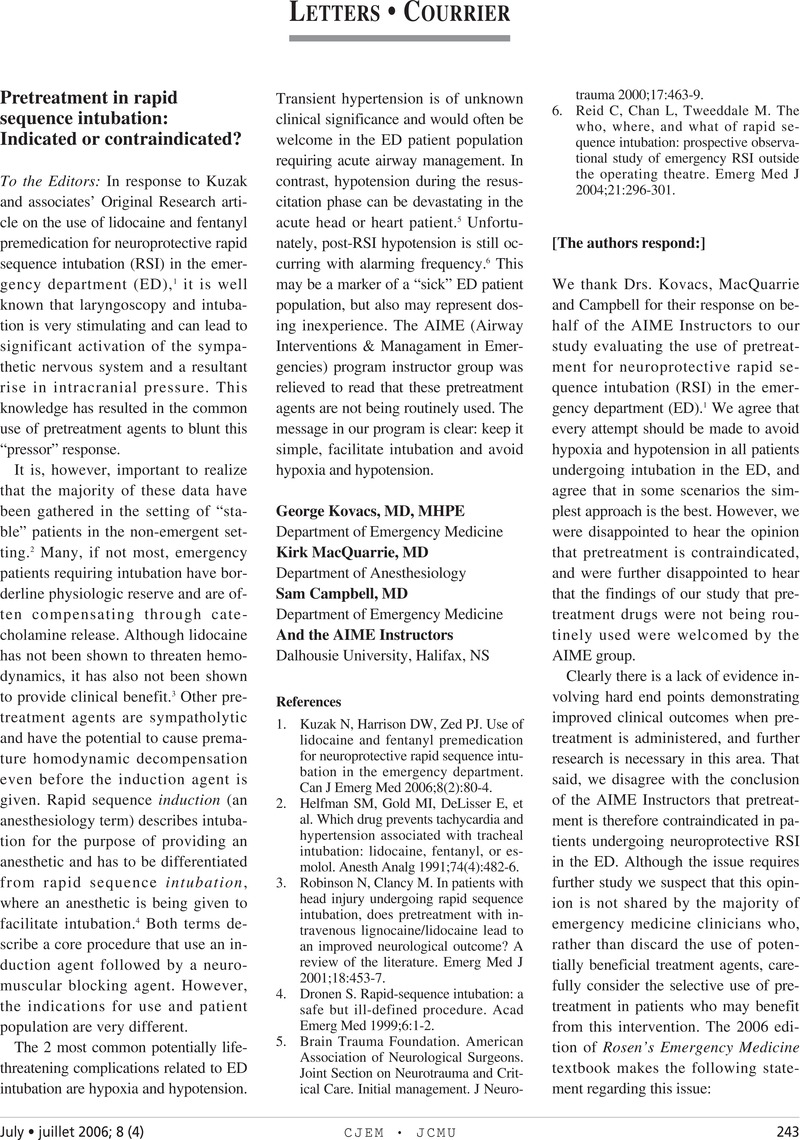No CrossRef data available.
Article contents
[The authors respond:]
Published online by Cambridge University Press: 21 May 2015
Abstract
An abstract is not available for this content so a preview has been provided. As you have access to this content, a full PDF is available via the ‘Save PDF’ action button.

- Type
- Letters • Courrier
- Information
- Copyright
- Copyright © Canadian Association of Emergency Physicians 2006
References
1.Kuzak, N, Harrison, DW, Zed, PJ. Use of lidocaine and fentanyl premedication for neuroprotective rapid sequence intubation in the emergency department. Can J Emerg Med 2006;8(2):80–4.CrossRefGoogle ScholarPubMed
2.Walls, RM. Airway. In: Marx, JA, Hockberger, RS, Walls, RM, et al, editors. Emergency medicine: concepts and clinical practice. 6th ed. Missouri: Mosby; 2006. p. 2–26.Google Scholar
3.Zed, PJ, Abu-Laban, RB, Harrison, DW. Effect of fentanyl pretreatment on sympathetic response in patients with cerebrovascular accident undergoing rapid sequence intubation in the emergency department [abstract]. Can J Emerg Med 2004;6(3):197.Google Scholar
4.Zed, PJ, Abu-Laban, RB, Harrison, DW. Intubating conditions and hemodynamic effects of etomidate for rapid sequence intubation in the emergency department: an observational cohort study. Acad Emerg Med 2006;13:378–83.CrossRefGoogle ScholarPubMed




